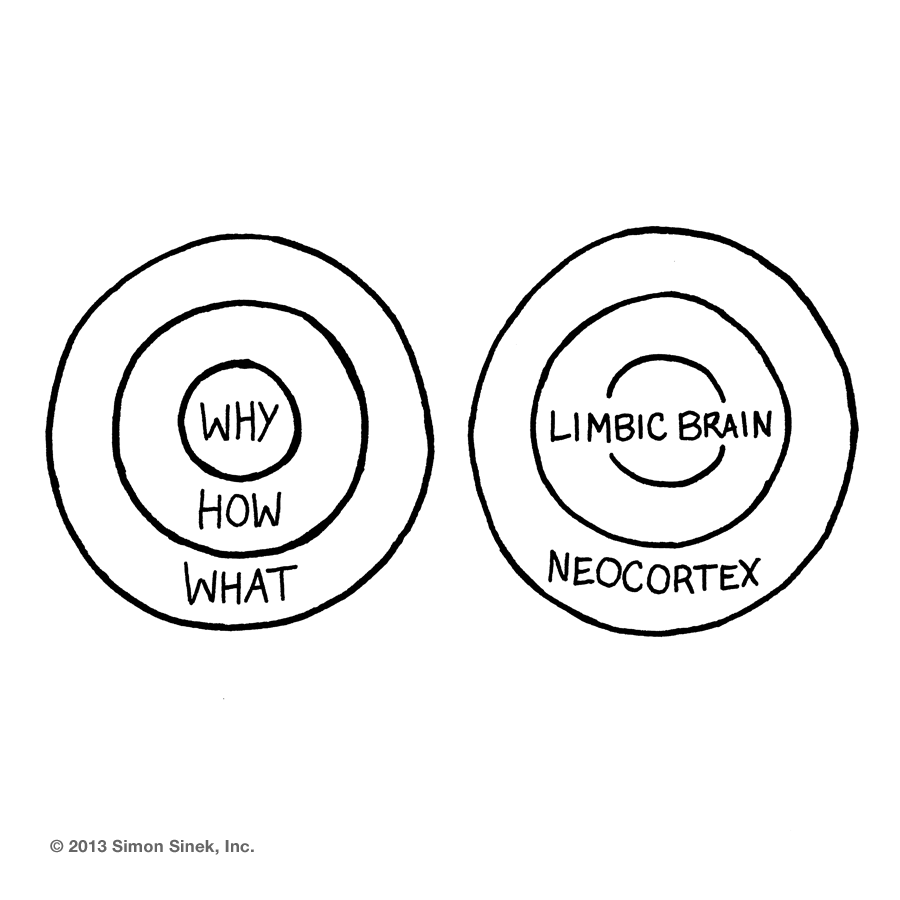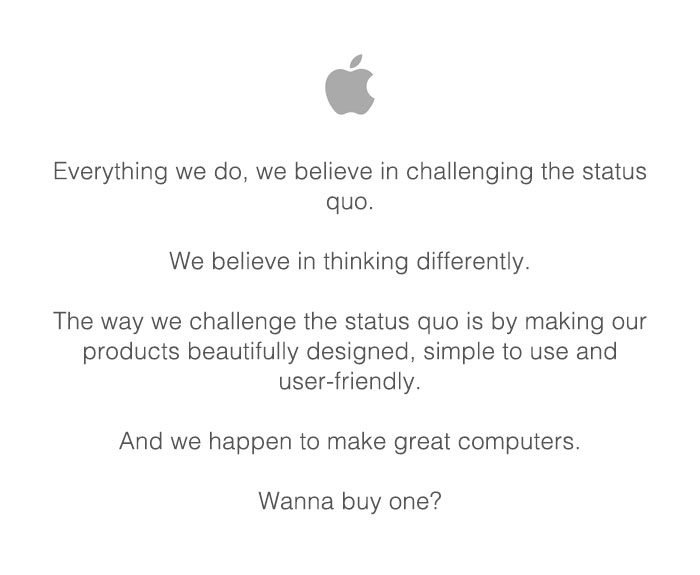The Next Great Marketing Bible
Ironically, Simon Sinek’s book is not positioned as a marketing book, even though Simon is a savvy marketer.
In 1981, Jack Trout and Al Ries immortalized the concept of “positioning,” a term which Trout had first introduced into the marketing zeitgeist more than a decade earlier.
According to Jack Trout and Al Ries, your brand “position” lives inside the mind of your customer or prospect.
Thirty years later Positioning still has a place in the book rental program of my product management class for good reason(1).
It is an unparalleled application of a single, simple concept to examine the mechanics of why some brands succeed. Until recently.
Coincidentally(2) I was introduced to Simon Sinek’s Start with Why at the exact time I’d been revisiting the vision, values and core strategy of my own product innovation company.
The book came up while I was soliciting a fellow GA instructor to help our team out with some overflow UX work. He was interested, but he wanted to know why we do what we do at The Development Factory. If the conversation had happened just six weeks earlier, I would have frozen up — because that very “why” had been keeping me up for years(3).
In order to understand the impact of Sinek’s work, we must first go back to Trout and Ries.
As defined in their book, your brand position exists in the mind of your customers and prospects. In short, you are what the market says you are.
Successful positioning is the instantaneous, almost unanimous association of the word “safety” with the name Volvo; it’s Apple’s “brilliant design;” the “simplicity” of Basecamp.
Ergo, the marketing mission is to establish a brand or product position that you want to be known for, before your customer decides you are, in fact, something else (generally less favourable).
Contemporary critics might denounce many of the examples from Positioning as dated, but the stories (and positioning strategies) of brands like Southwest Airlines and IBM still stand up the concept and make for great case studies.
Ironically, Sinek’s book is not positioned as a marketing book, even though Simon is a savvy marketer. Start with Why is a book about leadership(4).
Simon Sinek believes our “why” is the purpose, cause, or belief that inspires us to do what we do.
He believes great visionaries — such as Steve Jobs (Apple), Herb Kelleher (Southwest) and Sam Walton (Walmart — yes, Walmart under Sam’s leadership) — lead their businesses to greatness by operating from a clear why.
Sinek’s own why is to help people learn and live theirs.

On the left, Simon Sinek’s “Golden Circle.” On the right, the human brain.
The core concept is something he calls “The Golden Circle” which mirrors the limbic brain — the part responsible for all our feelings, such as trust and loyalty. The limbic brain feels, the neocortex speaks.
In fact, because the limbic brain has no language capability, the neocortex analogizes our feelings with words. Our brains work backward to try to communicate sentiments for which there are, literally, no words.
This same backwards communication is how most brands try to sell themselves. By focusing on what they do or how they do it. They sell from the outer rings of the Golden Circle.

Imagine how an Apple ad would read if they communicated from their WHAT instead of their WHY?
If Apple did what most brands do, their messaging would probably start with some statement of what the company makes or does, followed by how they think they are different or better than the competition, followed by some call to action. Brands that succeed root their messages in why they exist.
They start with why.

Apple’s message feels different because it emanates outward from WHY they do WHAT they do. Insofar as our brains being responsible for how we perceive brands and products, both Positioning and Start with Why make a compelling case:
you have to communicate the right feeling to your customers.
What’s significant about Sinek’s work is not the ways in which it echoes Trout and Ries, but how it diverges on two specific points.
1. You can’t be all things to all people, and anyway, why would you want to?
The power of successful positioning, as Trout and Ries argue, is flooding the mainstream consciousness with a shared impression about who you are. A collective acknowledgement.
But getting a lot of people to agree about the message your brand communicates shouldn’t be the goal. You want to attract people who believe in your specific cause. Because beliefs are powerful. Beliefs inspire loyalty. Brands that succeed — brands that effectively communicate their why — hold up a mirror and invite us to see ourselves in them.
The message to founders, executives and marketers is to know first who you are and why you exist. If you understand that and can articulate that feeling, then it’s easy to invite customers and employees to join your cause. People will see themselves in you and they will follow you, irrespective of price or other obstacles.
“It is the cause that is represented by the company, brand, product or person that inspires loyalty” — Simon Sinek
2. Inspiration over Manipulation
I don’t believe Jack Trout or Al Ries ever specifically advocated for manipulating customers (price, promotions, fear, scarcity, and even “innovation” are all ways that brands try to differentiate with their what), but they have always celebrated a tactical approach.
Starting with why is visceral. That’s the biology of the limbic brain. We feel what’s right.
It has been written a hundred times over that millennials crave authenticity. This isn’t specific to millennials. Younger audiences are just less afraid to openly reject things that feel fake or contrived.
We all want to be inspired. We all want to believe.
Footnotes
1. The role of the product manager collapses the skills of ux design, coding, and marketing into a single job function. That’s why I include Positioning AND Start with Why in my course reading alongside other modern bibles of the startup movement such as The Lean Startup, Traction, and Hooked. 2. I subscribe to the Redfieldian notion that there are no real coincidences. 3. At The Development Factory, we believe the world can be a better place. And that technology can help. And that we can help. That’s why we’re here. 4. Start with Why was published in 2011. Check out Sinek’s latest book, Leaders Eat Last.


